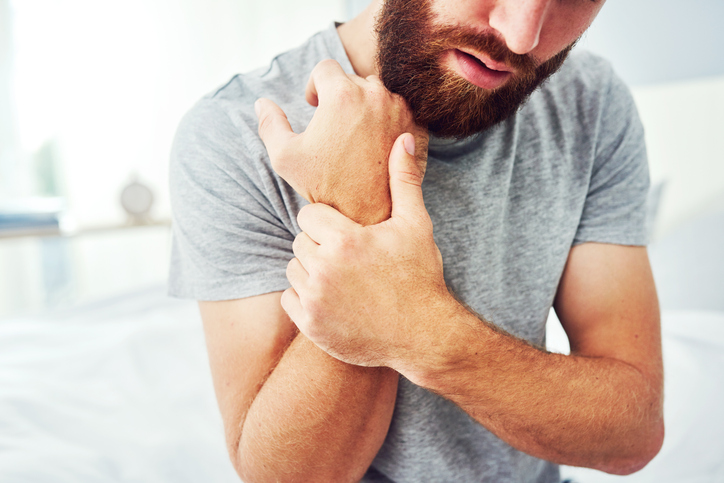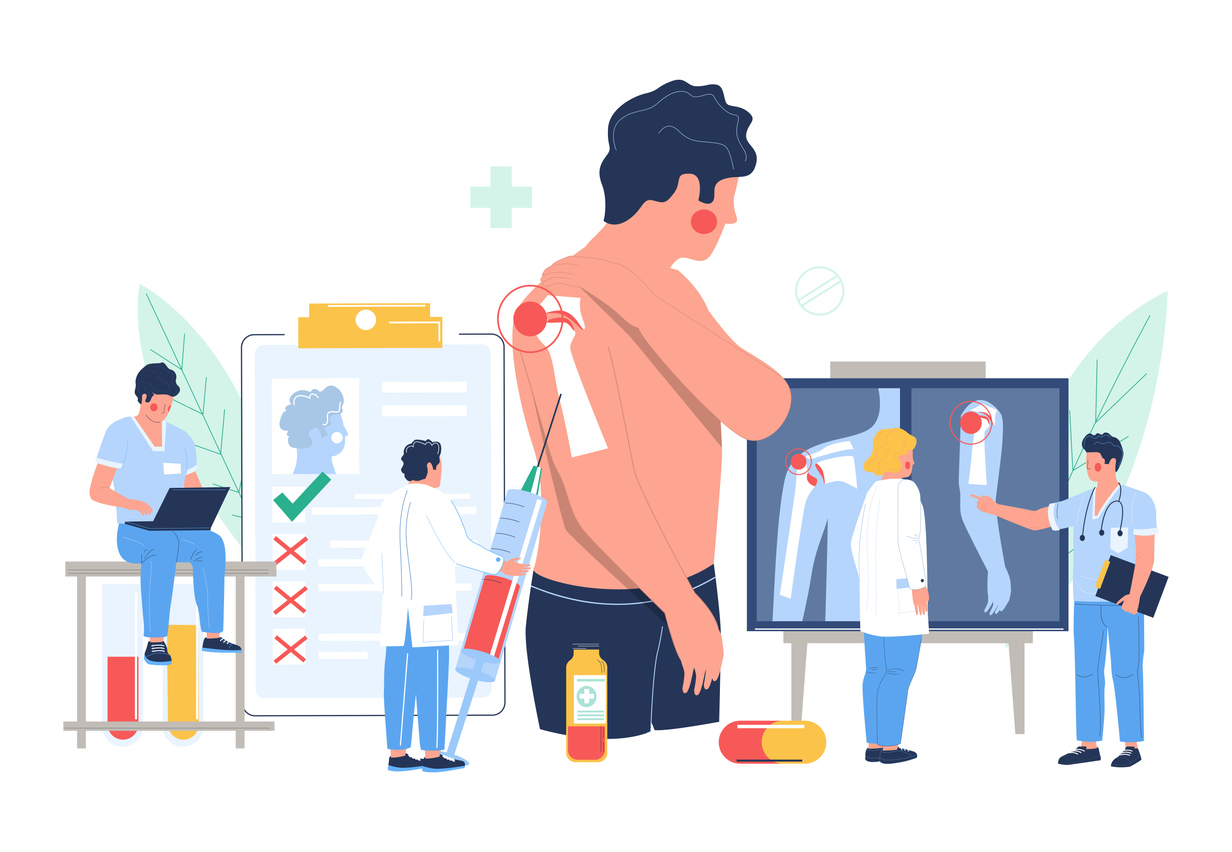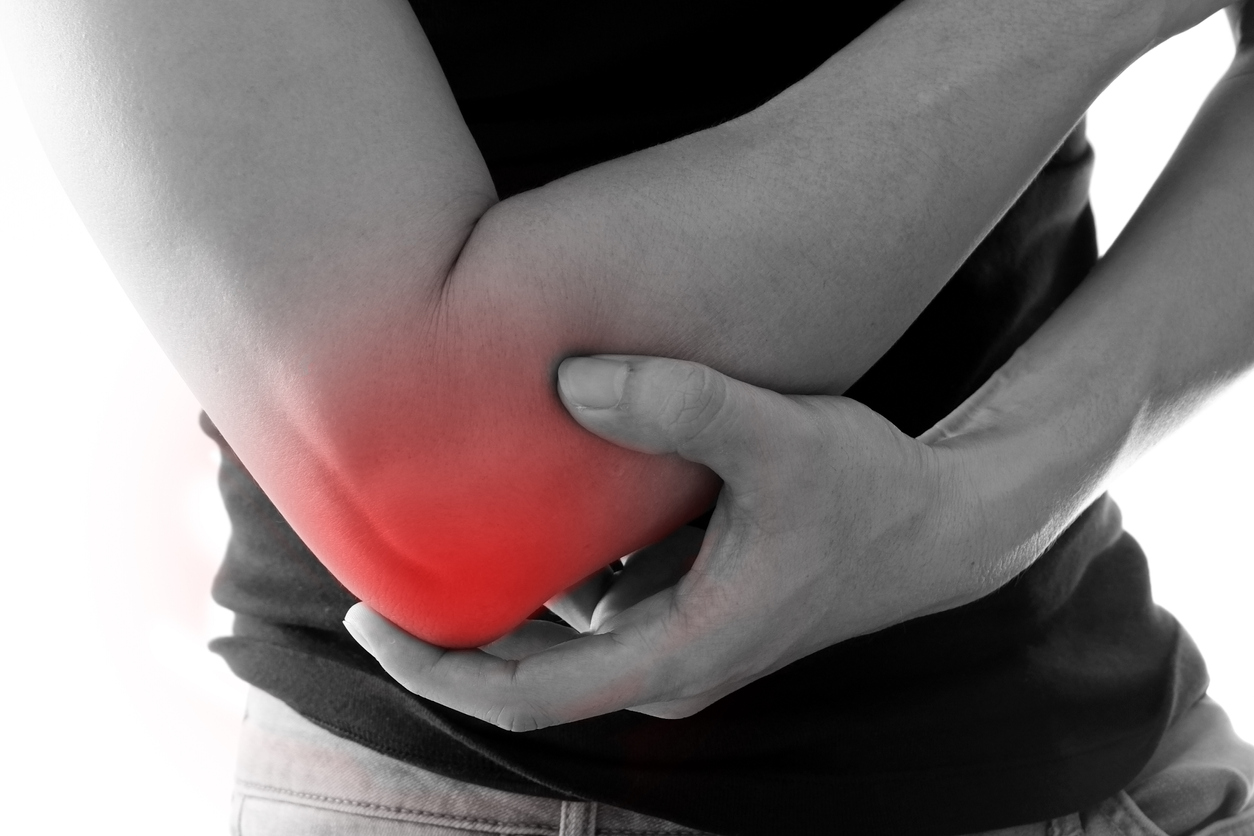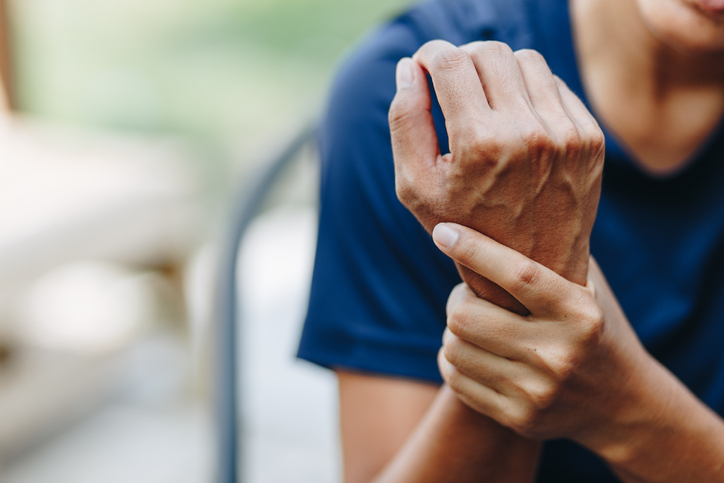Pain
10 Causes of Arm Pain
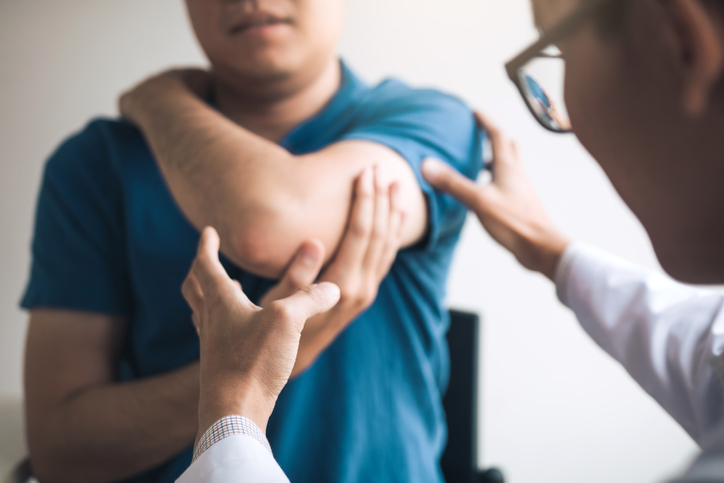
Arm pain ranges in severity from a slight inconvenience to a life-threatening alert. It is caused by several different health conditions or injuries. Typically, people do not take arm pain seriously, especially if it is the only symptom. However, if the origin of arm pain is not known, it is best to be seen by a medical professional for a proper diagnosis.
Simple Sprain
A sprain occurs when ligaments are stretched or torn. Overextending the arm when engaging in a strenuous sport, landing awkwardly during a fall, and lifting heavy objects are common causes of sprains. Fortunately, most arm pain caused by a sprain is simple to treat with a combination of ice packs and pain medication.
Tennis Elbow
Similar to a simple sprain, tennis elbow is the result of a minor injury to the tendons caused by overstraining. This pain typically presents as a constant ache that worsens when moving the elbow. Unfortunately, this condition can last for several weeks and is prone to bouts of recurrence. In the most severe cases, painkillers only provide short-term relief. If pain from tennis elbow lasts for an extended amount of time, it may indicate the tendons did not fully recover from the first injury and were reinjured. Nutrition plays a role in the time it takes injured tendons to heal.
Angina
Angina produces random flares of chest pain that often last for several minutes. Angina is caused by restricted blood flow in the arteries; this causes a heavy, muted tightness in the chest that can radiate to one or both arms. If an individual experiences repeated bouts of arm and chest pain, especially after physical exertion or straining, they should be evaluated by a health professional for suspected angina.
Carpal Tunnel Syndrome
Carpal tunnel syndrome is a common cause of arm pain. It occurs due to a pinched nerve located in the carpal tunnel, a passageway in the wrist that protects the median nerve and tendons which generate finger and thumb movement. People who have carpal tunnel syndrome experience pain, numbness, and tingling in their arms, hands and fingers. Weakness in the hands may also occur which results in restricted movement and the tendency to drop things. If arm pain occurs in conjunction with hand and wrist discomfort or pain, it may be beneficial to get tested for carpal tunnel syndrome.
Bursitis
This condition involves inflammation of the fluid-filled sacs (bursae) present beneath the skin. Bursae act as a buffer between the bones and tendons; however, in the event of an injury or repetitive movement, they can swell and cause tenderness and pain. Although bursitis can occur in various areas of the body, the arms and shoulders are the most commonly affected regions. Generally, bursitis is not a serious condition and can usually be treated with ice packs and over-the-counter pain medication. Despite the simple treatment, repeated straining of affected regions may delay full recovery and possibly lead to complications.
Heart Attack
Arm pain can be a symptom of a heart attack. When a heart attack occurs, the proper amount of oxygen-rich blood is restricted from reaching the heart which prohibits the heart muscle from functioning properly. People that suffer from angina are at higher risk of heart attacks. Although the pain from angina is intermittent, heart attack pain is unrelenting. Generally, pain from a heart attack develops in the chest and progresses into a sustained aching that expands down the left arm. A heart attack is a medical emergency. It is important to note that women may not experience this presentation.
Rheumatoid Arthritis
Rheumatoid arthritis is a chronic inflammatory condition that results in loss of proper joint function, particularly in the hands, wrists, elbows and feet. It is a progressive autoimmune disorder that causes stiffness and painful swelling in the joints. Over time, rheumatoid arthritis can lead to joint deformity. While this condition generally affects people over 40, it can occur at any age. Common symptoms include: fatigue, joint tenderness, morning stiffness, and weight loss.
Herniated Disk
Located between spinal vertebrae, disks provide the spine with flexibility and act as shock absorbers. However, if a disk bulges or ruptures, it can cause numbness, pain, and weakness in the extremities. If the herniated disk is located in the neck, the arm(s) are most likely to be affected. Aging is the most common cause of herniated disks.
Rotator Cuff Injury
The rotator cuff is comprised of muscles and tendons that surround the joint of the shoulder and maintain the position of the upper arm within the shoulder socket. An injury to the rotator cuff produces soreness and pain when the shoulder joint is used. The rotator cuff generally gets damaged due to physical stress, an awkward fall, or improper lifting. Physical therapy can aid in improving the strength and flexibility of the joint. If the rotator cuff is severely injured, surgical repair or replacement of the joint may be required.
Tendinitis
Swelling and tenderness of the tendons is referred to as tendinitis. The tendons are stretchy tissues that connect muscles to bones and can easily become injured from repetitive physical stress (especially tendons in the wrist, shoulder, and elbow). People who play sports, such as baseball, tennis, or golf, are most at risk for developing tendinitis.


